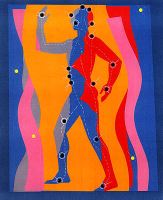 Although it’s widely used for chronic pain, there’s controversy as to its value.
Although it’s widely used for chronic pain, there’s controversy as to its value.
Now, researchers at Memorial Sloan-Kettering Cancer Center, in New York City, reviewed the evidence in 4 chronic pain conditions. Continue reading Acupuncture: Effective to treat chronic pain →
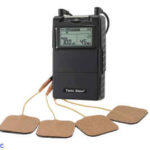 Myofascial trigger points may cause joint pain, headaches, and other kinds of pain so severe that it doesn’t respond well to painkillers.
Myofascial trigger points may cause joint pain, headaches, and other kinds of pain so severe that it doesn’t respond well to painkillers.
Researchers at CEU-San Pablo University, in Madrid, Spain, assessed the response to burst application of transcutaneous electrical nerve stimulation (TENS). Continue reading TENS to treat latent myofascial trigger points →
 The trapezius muscle contains trigger points (hyperirritable spots). Referred pain from these trigger points frequently cause patients to seek treatment.
The trapezius muscle contains trigger points (hyperirritable spots). Referred pain from these trigger points frequently cause patients to seek treatment.
Researchers at Anglo-European College of Chiropractic, in Bournemouth, UK, studied the immediate effect of electric point stimulation (TENS). Continue reading TENS to treat trapezius muscle trigger points →
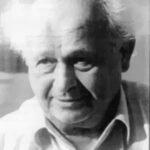 Researchers at Umea University, in Sweden, report on the experiences of people with chronic pain after Feldenkrais group intervention. Continue reading Feldenkrais as group treatment for chronic pain →
Researchers at Umea University, in Sweden, report on the experiences of people with chronic pain after Feldenkrais group intervention. Continue reading Feldenkrais as group treatment for chronic pain →
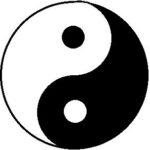 Workplace computer use has been linked to musculoskeletal disorders, a leading cause of work disability and productivity losses in industrialized nations.
Workplace computer use has been linked to musculoskeletal disorders, a leading cause of work disability and productivity losses in industrialized nations.
Researchers from York University, in Toronto, Ontario studied tai chi as a workplace physical exercise for health promotion. Continue reading Tai chi in female computer users →
 Type “naprapathy” into Google and — you guessed it, — you’re asked, Did you mean: Naturopathy?
Type “naprapathy” into Google and — you guessed it, — you’re asked, Did you mean: Naturopathy?
No…I meant N A P R A P A T H Y ? the stealthy CAM.
Continue reading Naprapathy →
 Radial extracorporeal shockwave treatment was compared to supervised exercises by researchers at Ullevaal University Hospital, in Oslo, Norway. Continue reading Treating rotator cuff pain with exercise →
Radial extracorporeal shockwave treatment was compared to supervised exercises by researchers at Ullevaal University Hospital, in Oslo, Norway. Continue reading Treating rotator cuff pain with exercise →
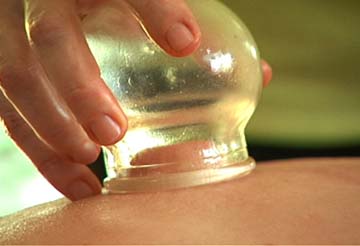 Cupping is a treatment in which evacuated cups are applied to the skin to draw blood through the surface.
Cupping is a treatment in which evacuated cups are applied to the skin to draw blood through the surface.
Researchers from Immanuel Hospital Berlin, in Germany reported the response to this traditional method of treating musculoskeletal pain. Continue reading Cupping in patients with carpal tunnel syndrome →
 Guasha (aka Gha Sha) is used in Chinese medicine to control pain. It uses tools to scrape or rub the surface of the body to relieve blood (Xue) stagnation (video here).
Guasha (aka Gha Sha) is used in Chinese medicine to control pain. It uses tools to scrape or rub the surface of the body to relieve blood (Xue) stagnation (video here).
Researchers from the Korea Institute of Oriental Medicine, in Daejeon, South Korea reviewed the supporting evidence. Continue reading Using Gausha to treat musculoskeletal pain →
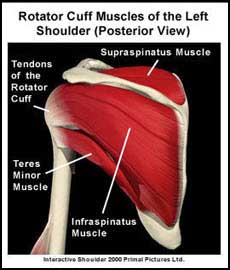 Researchers in Spain evaluated single-point acupuncture as an adjunct to physiotherapy to improve shoulder function in patients with unilateral subacromial syndrome. Continue reading Acupuncture plus physiotherapy for painful shoulder →
Researchers in Spain evaluated single-point acupuncture as an adjunct to physiotherapy to improve shoulder function in patients with unilateral subacromial syndrome. Continue reading Acupuncture plus physiotherapy for painful shoulder →
 Dr. Jennie Tsao from the David Geffen School of Medicine at UCLA in California has reviewed the evidence and concludes it depends on the type of pain being treated. Continue reading Massage for chronic pain not related to cancer →
Dr. Jennie Tsao from the David Geffen School of Medicine at UCLA in California has reviewed the evidence and concludes it depends on the type of pain being treated. Continue reading Massage for chronic pain not related to cancer →
 Writing in Yoga Journal, Julie Gudmestad says, “There are 2 concerns to keep in mind when working with neck positioning in yoga.”
Writing in Yoga Journal, Julie Gudmestad says, “There are 2 concerns to keep in mind when working with neck positioning in yoga.”
Here’s the “what” and “why” of it. Continue reading Caution: neck rolls and stretches during yoga →
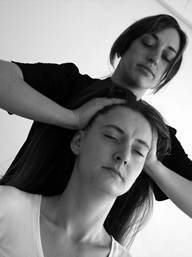 Let’s start by stating that neither of the above terms — Indian Head Massage, nor the trademarked term Champissage — results in an article on PubMed.
Let’s start by stating that neither of the above terms — Indian Head Massage, nor the trademarked term Champissage — results in an article on PubMed.
So, what’s it good for? Continue reading Indian Head Massage: aka Champissage →
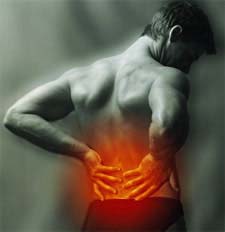 When combined with spinal manipulation, exercise, and other co-interventions, prolotherapy may improve chronic low-back pain and disability.
When combined with spinal manipulation, exercise, and other co-interventions, prolotherapy may improve chronic low-back pain and disability.
Think of it as complementary therapy for complementary therapy. Continue reading Prolotherapy and low-back pain →
Complementary and Alternative Medicine: Fair, Balanced, and to the Point
 Although it’s widely used for chronic pain, there’s controversy as to its value.
Although it’s widely used for chronic pain, there’s controversy as to its value.




 Type “naprapathy” into Google and — you guessed it, — you’re asked, Did you mean: Naturopathy?
Type “naprapathy” into Google and — you guessed it, — you’re asked, Did you mean: Naturopathy? Radial extracorporeal shockwave treatment was
Radial extracorporeal shockwave treatment was 

 Researchers in Spain
Researchers in Spain  Dr. Jennie Tsao from the David Geffen School of Medicine at UCLA in California has
Dr. Jennie Tsao from the David Geffen School of Medicine at UCLA in California has  Writing in Yoga Journal, Julie
Writing in Yoga Journal, Julie  Let’s start by stating that neither of the above terms — Indian Head Massage, nor the trademarked term Champissage — results in an article on PubMed.
Let’s start by stating that neither of the above terms — Indian Head Massage, nor the trademarked term Champissage — results in an article on PubMed. When combined with spinal manipulation, exercise, and other co-interventions, prolotherapy may improve chronic low-back pain and disability.
When combined with spinal manipulation, exercise, and other co-interventions, prolotherapy may improve chronic low-back pain and disability.